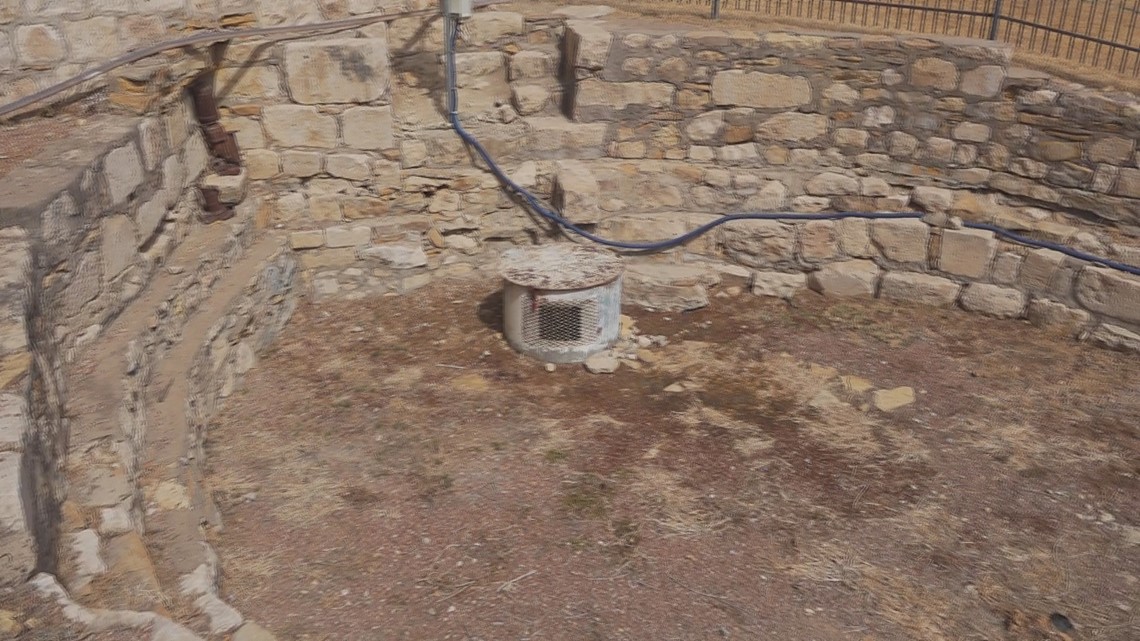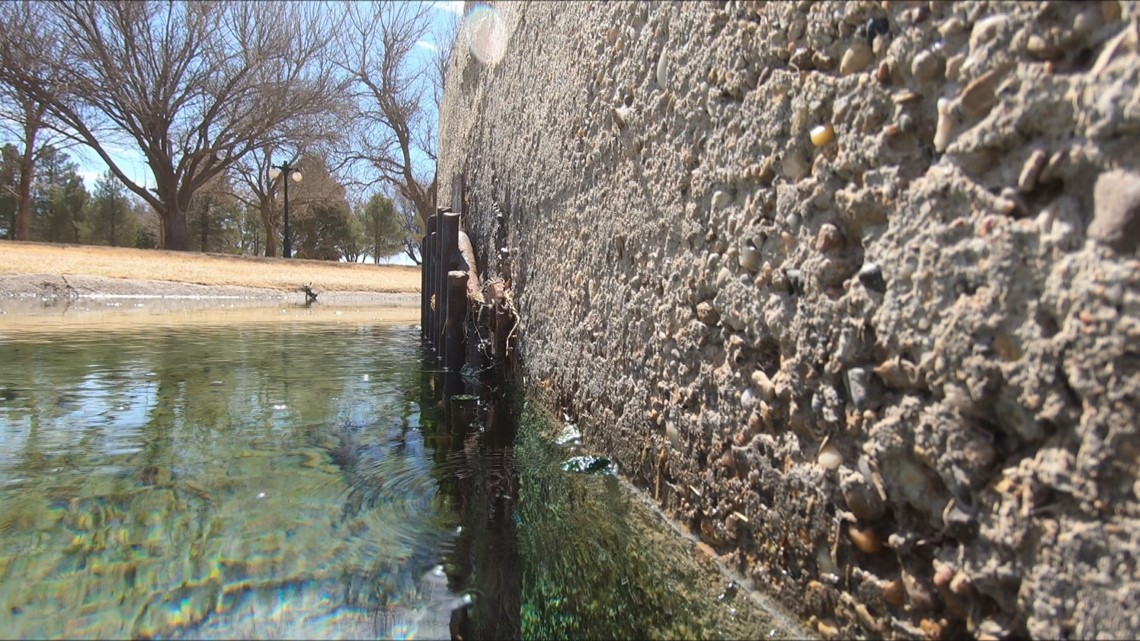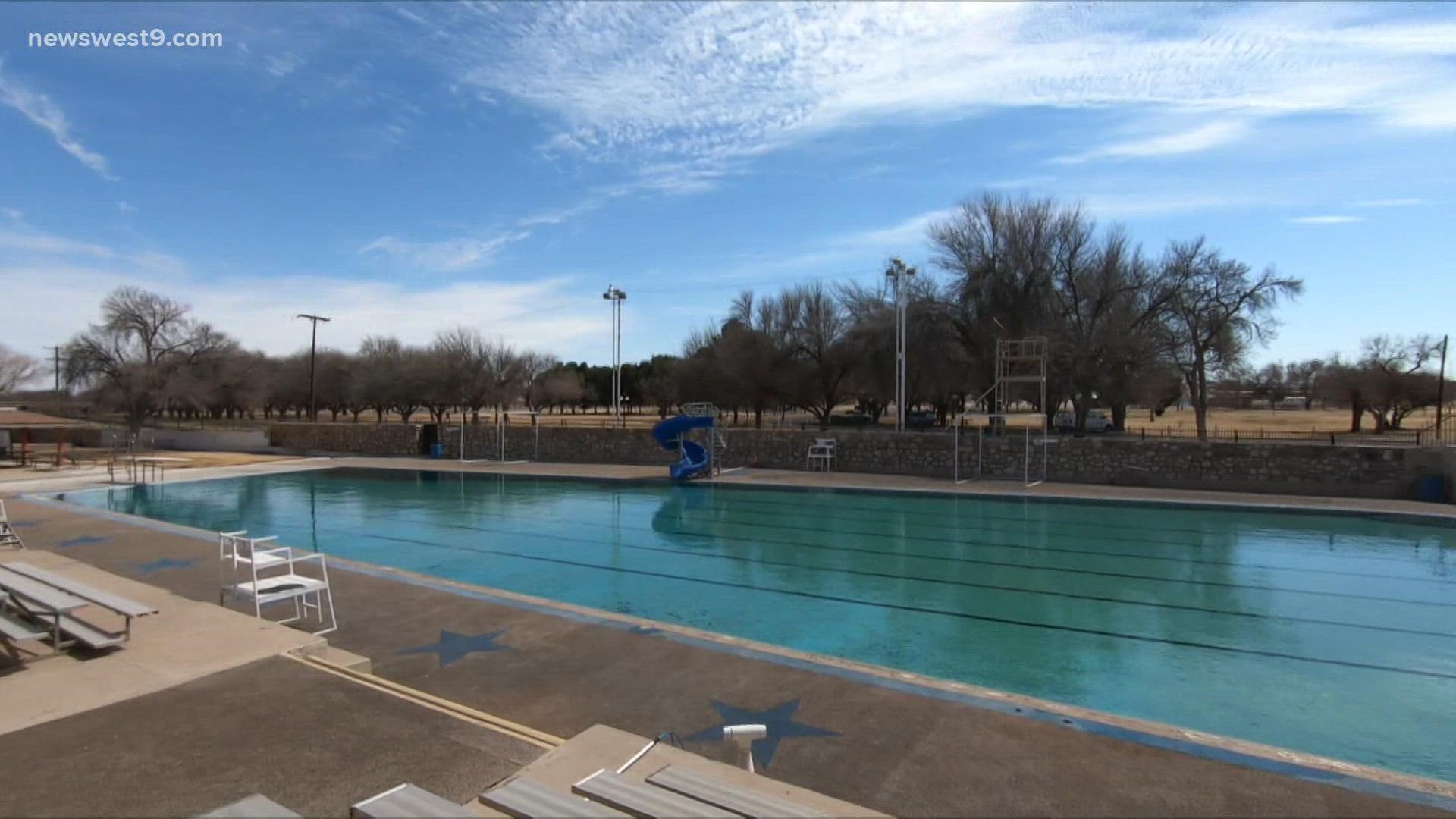FORT STOCKTON, Texas — If you've lived in West Texas long enough, you've probably heard the story of how the springs started. If you haven't, it was once the third largest spring system in the entire state of Texas.
It stopped flowing over 60 years ago. Now, it flows once in a while, but there are several groups working to see if they can get it to flow again year-round.
Today, Comanche Springs is the local pool at Rooney Park. It's an Olympic-sized pool that was built on top of the real deal. It's not part of the springs but rather it runs on water from the county. The large body of water that was originally there was a natural pool that was fed by a spring called the Comanche Chief.


The springs were already here hundreds of years which helped the migration of Indian tribes including the Comanche and Apache because of course, water.
"It was a primary water spot for them because water is so far apart in West Texas, and the Pecos River was salty," said Paul Weatherby, the Vice President of the Pecos County Water Control and Supply District 1.
Fast forward to the early 1900s, it supported several farmers in the area.
The Comanche Chief, which eventually had a cage built on top of it, was one of the larger parts of the Comanche Springs, pumping 60 million gallons a day. Think Balmorhea, except this was bigger.
The Schlegel family were the water masters who dispersed a certain amount of spring water to the farmers back then. By the time the 1960's rolled around, the springs stopped flowing altogether. If you ask anyone in town, most people know why.
"You might say for better words, the redirected use of water caused springs to not flow in spring and summer time and early fall simply because the water was still available but the level of aquifer was dropped down because of increase flow going up for irrigation flow primarily," said Weatherby.
This was because there were farmers who were pumping groundwater upstream. Since they owned land higher, they drilled enough wells to cause the springs to pump dry. After some legal battles in court, groundwater was still being pumped until it couldn't anymore. That wasn't until 25 years later, when water started to flow again.
It still does from time to time. The reason why? Farmers would turn off irrigation pumping by the time winter came around. That's when the aquifer would bounce back.
Sometimes, the water will stick around, depending how much water is utilized out of the aquifer.
But the big question is will we ever get Comanche Springs back? That's when Texas Water Trade comes into play.
"Every aspect of our life is touched by water," said Quinn McColly, PhD. McColly is the Conservation Finance Director with the Texas Water Trade.
The TWT is a group that works to provide sustainable water resources across the state. There was no question when it came to addressing the water issue in Fort Stockton.
"We saw a place where we can incentivize and encourage increase on-farm irrigation efficiencies so we can save water and keep it in the system," said McColly. "Maybe extend spring flow period a little bit so people can enjoy this beautiful resource."


Texas Water Trade has been studying about the possibility of restoring Comanche Springs for the long-term. They've been meeting with landowners and farmers that are upstream from the springs.
So what happens if Comanche Springs flows back to its fullest potential? The short answer, it would definitely put Fort Stockton on the map.
"I there's benefits that could be reaped by the local business community," said McColly. "We harvest tourism and this is the kind of thing that's going to get people to come."
One way they're getting the community together is through SpringsFest to celebrate the historic springs. It's the chance you'll learn about the very thing that flowed life to Fort Stockton. From oral historians, to photographs, to donated antiques.
SpringsFest will be Saturday, March 12 at the Annie Riggs Museum in Fort Stockton. It's on 301 Main Street. The celebration will include a tour of the springs and live music by Ken Baucham. Be sure to arrive no later than 1:30 p.m. for the tour. You'll be able to see the historic Comanche Springs Bathhouse, which attracted thousands of tourists every summer.

